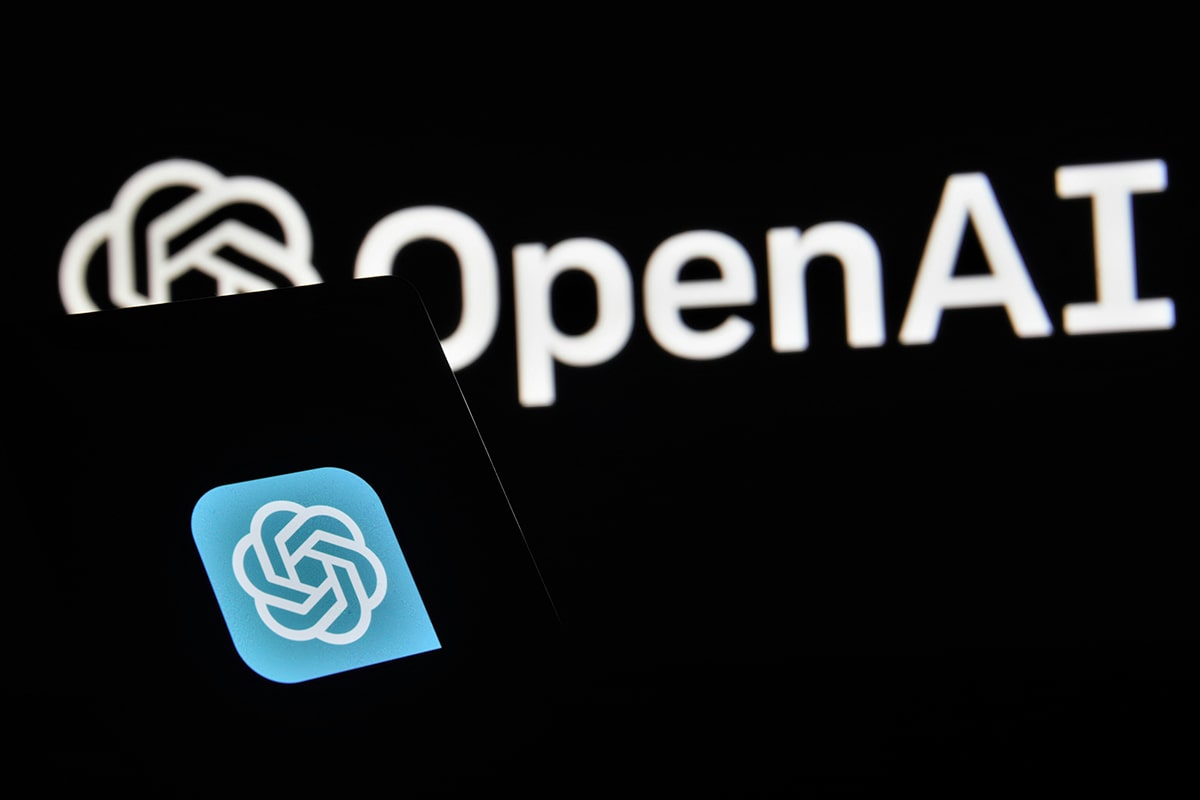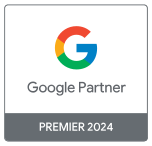
Just how good is Google Ads’ new AI ad-creation support?
s a 25-year-old, my life has been charactertised by rapid technological advancement. I was born into a world of VHS and clunky Gameboys, but by the time I was 11, laptops and touch screen phones were everywhere.
Through my teenage years, revolutionary apps like Uber, Deliveroo and Instagram were released on these phones, which changed the way we live our lives, facilitating profound economic and societal shifts.
This pace of change slowed until late 2022, the year when artificial intelligence first entered the mainstream. And it is my conviction that much like everyone now has a computer, a smart phone and internet access, so to will everyone soon interact with AI in some form in the very near future. It will touch every corner of our lives, and, however principled you may be against it, using it will be unavoidable – just like smart phone ownership is near enough unavoidable today.
Artificial Intelligence enters the mainstream
Like humans, the uses of artificial intelligence are seemingly infinite, because at it’s heart AI is ‘the theory and development of computer systems able to perform tasks normally requiring human intelligence, such as visual perceptions, speech recognition, decision-making, and translation between languages’ (Oxford Dictionary) – essentially, AI is merely an optimised substitute for human intelligence, and there really aren’t many things humans can’t do.
AI as more than a bit of fun?
I first interacted with AI in late 2022, after hearing about the release of the now ubiquitous Chat GPT. I was seriously amazed. I remember getting it to write soliloquies in Shakespearean style, answer mathematical questions and give me rundowns of historical events. It was fast, conversational and seemed pretty precise. But ultimately, it was just a bit of fun. That was until I realised it could be help me with my day job.
Like it or not, a big of part of working in digital marketing is the writing of ad copy. Our ability to write lots of copy, to write it fast, and to write it to often strict character lengths is almost taken for granted, given that some people’s entire career is centred around copy writing. For a single ‘best in-class’ Google ad, for example, we need 15 ad headlines, all of which are under 30 characters in length, 4 descriptions that are under 90 characters in length, and then sitelinks and call out extensions too with their own character limits. And if you want to A/B test the performance of different copy, you can double that amount.
Using the Art of Storytelling in Your PPC Campaigns
So when I discovered Chat GPT could help me with writing copy, I was pretty happy. The trouble was, it really wasn’t very good – the copy was either sterile, inhuman, overly-enthusiastic or lacking in an understanding of cultural nuance. Basically, it felt fake.
Understandably, when I then attended a Google Ads masterclass on YouTube – along with a whopping 34 others – I was pretty skeptical when they said they were rolling out a beta-version of an ‘AI ad-creation assistant’, to help with ad copy and keyword creation. Essentially, as with Chat GPT, you would ‘prompt’ the assistant with a description, as well as providing a URL landing page, and the system would suggest keywords and ad copy.
In all honesty, I’ve tried it once or twice very briefly. So I thought the next time I’d try it would be right when I’m writing this blog, in order to capture my thoughts ‘live’, as it were. In order to do this, I thought I’d conduct an experiment, using an imaginary client – in this case Pets At Home (because everyone loves puppies) – and use them as a guinea pig (honestly no pun intended) for my experiment. So without further ado, let’s jump into the platform and give the new Google AI assistant a whirl.
Available for Search campaigns only, the AI assistant will appear once you’ve been through both the ‘bidding’ and ‘campaign settings’, and arrive at the ‘keywords and ads’ section of the campaign build. The top of the AI-assistant box simply reads ‘Get help creating your ad’, and then that the ‘Google AI will use your URL and the information you provide to create assets, like keywords, headlines, and descriptions for you to review’.
First impressions, really not great
Firstly, what’s interesting is that the system asks you to ‘describe the product or service you want to advertise’, but this box automatically populates after the URL is entered – which in the case is petsatshome.com. To be fair, the description is pretty accurate, reading that the business ‘has all the pet supplies, pet food, toys and accessories you and your pet needs at great prices’ and that the ‘target audience is pet owners who are looking for a one-stop shop for all their pet supplies’. So far, so good. Now it’s time to press ‘help create my ad’ and see what happens!
First, let’s deal with spelling and grammar mistakes. The system supplied 11 out of the 15 headlines. 10 out of 11 of them capitalise the first letters of every word in the headline, like ‘Pet Shop Supplies’, ‘Dog Supplies’ and ‘Pet Supplies Made Easy’, but then randomly with ‘Amazing prices’, the word ‘prices’ has a lowercase p. I mean, call me pedantic, but I found that odd. Secondly, and this irks me a little bit more and is a classic of AI copy – American English – it’s ‘Shop Your Favourite Brands’, not favorite, which the system supplied.
The next point is an even more glaring mistake, which was in one of the descriptions. The first description was pretty good, reading ‘Shop at Pets at Home for pet supplies, pet food, toys & accessories’. Fair enough – I actually think that’s not a bad description; it includes a call-to-action, the brand name, and a clear reference to the business offering. The second, however, was awful: ‘Buy dog food, cat food, pet supplies and more online at Very Pet Shop’. It wouldn’t actually be that bad, but it got the brand name completely wrong.
The third and final point I’d like to make is that the headlines and descriptions just aren’t that good – and for me, that is the number one problem I’ve encountered when using AI to assist with copy, or in this case copy and keywords. Some are too generic, like ‘Great Prices’ and ‘Wide range of products’, some read really badly, like ‘Shop at Pet Shop’, and others are ok, but feel a little flimsy and weak, like ‘Puppy Supplies’ and ‘Buy Pet Food Online’. It all feels generic, boring and a little robotic. Let’s see what happens when a human writes the same headlines – in this case, myself. I’d focus more on the subject – the reader – by using the word ‘you’, with ‘The Best Supplies For Your Pet’, or igniting curiosity and a sense of exploration with ‘Discover Thousands Of Pet Toys’, or the idea that the site caters to a wide market with ‘Explore Supplies For Any Pet’. These headlines use more verbs, focus on the subject and have a purpose behind them, which I feel is missing with the AI examples that we reviewed above.
Testing niche subject matter
Let’s re-do the test, though, because perhaps I’m being a bit unfair. I used a very wide and broad URL by just linking it to the homepage. I want to see what happens when I focus on one section of the website for one particular segment of the market, which mimics more closely how digital marketers would actually create campaigns.
I’ve therefore gone for a far more specific URL and therefore a far more specific section of the market, using petsathome.com/shop/en/pets/cat/cat-food. Again, as I’m writing I’m doing this in real time – I’m interested to see whether the platform returns headlines, descriptions and keywords relating strictly to users looking for cat food. Let’s see how this goes!
Initially, the keywords aren’t bad, including ‘cat food’ (obvious tick), ‘cat food shop’ (good), and ‘food for cats and dogs’ (ok, not so good – that’s far more broad and would mean our ad would appear for those searching for dog food – not what we want). Also included was ‘cat toys’ (bad) and ‘cheapest way to buy cat food in bulk’ (I actually really like this longer-tail and far more specific keyword – this would have a place in my campaign). So overall thoughts with the keyword targeting here, not bad – but if you were too include all of these without any critical oversight you would be very far from creating a best in-class campaign.
Now, onto the ad copy. My initial thoughts are that these are slightly better than the ones with the generic, site-wide homepage URL. Headlines like ‘Cat Food Shop Online’ demonstrate that the AI has accurately crawled the URL and understands what we want to achieve, as well as ‘Cheap Cat Food’ and ‘Cat Food For Sale’. Again, though, these are very far from amazing and feel sterile and boring. The AI does show off a bit of it’s flair with a nice rhyme though, with ‘Delicious & Nutritious’ appearing in the copy, which I quite like and would even possibly use. As for the descriptions – of which there are only 2, not 4 – they feel very similar to the homepage-derived ones, and are characteristically boring and generic, reading ‘Pets at Home: Shop cat food from big brands with free delivery over £45’ and ‘Shop online for cat food, toys, supplies and more at Pets at Home’. Also, important to note that there were no sitelinks, callout extensions or structured snippets.
So, having now tested Google’s New AI Assistant with both a homepage and a more specific URL, I can confirm that I believe that anyone working in paid media won’t be replaced by AI anytime soon. Phew, our jobs are safe. This tool allows for speed, but speed is being swapped for quality. Saying that, though, sometimes in the paid media world when we need to write headline after headline, description after description, we need a bit of inspiration, we need a little something to get the ideas flowing – I definitely think this AI tool helps with that. Let’s take the headline ‘Cheap Cat Food’. On the surface, this is bad; it’s boring, listless and sparkle-less. But when I add two words to make it ‘Discover Cheap Cat Food Today’, prompting the reader to think that there is cheaper cat food out there to be discovered, that they should do it now, and that they were previously overpaying for their cat food. Or instead of the AI-suggested headline ‘Dry Cat Food’, what about ‘All Kinds Of Cat Food Available’, indicating to the reader the choice and variety of cat food being sold. Sure, the AI headline was sort of wrong and barking up the wrong tree by just supplying ‘Dry Cat Food’, but sparked the idea. That’s the stage we seem to be at with AI and ad copywriting – idea generation – and it seems to be very, very good at that.
And that’s absolutely fine, because it means we’re still useful and that we can’t be replaced by robots, which is good. It seems that AI has made things easier, potentially quicker, but that ultimately advertising will still be separated from each other by one thing – human talent and intelligence, because it’s that that makes these AI-written headlines better and actually more enjoyable to read.
Concluding thoughts on AI ad-creation support in Google Ads
I’ll finish on one more note. Which is that although the exercise of getting Google Ads’ new AI assistant to help with copy and keywords wasn’t that successful, I’m still extremely excited by this technology. The idea that all I needed to do was drop a URL into a box and hit enter, and an entire ad was written, based on the contents of that URL, is amazing. I’m not naïve to the fact that this technology has a long way to go, but it will only develop and get better and better. And maybe that’s when we should start worrying. Or should we? Because if everyone has access to use the same technology, then it’s still only the differences between us as humans which will separate us and mean that someone’s marketing is better than others.
And on one final, final note, I think the spirit of this article speaks to the spirit of the wider company and team here at Ality. It’s speak to the fact that we are not only unafraid of new technology but we embrace and are excited by it, we want to test it and we want to use it, but also we remain skeptical, knowing that we must always be highly critical of what is being created and ensure that it’s always our human intelligence that gets the last word. Thanks for reading.















